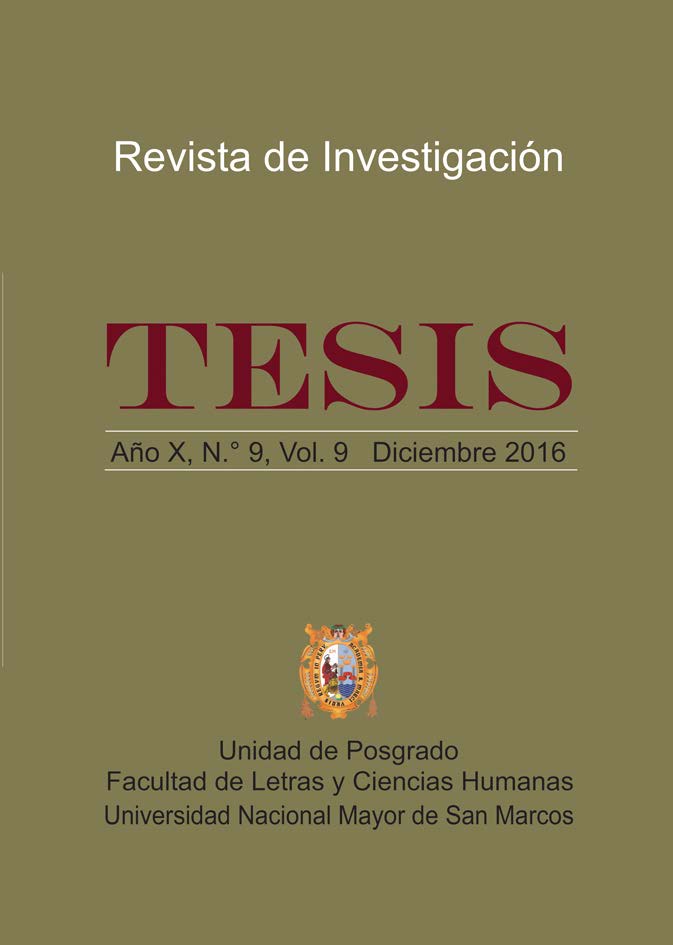The toponymy of Cochabamba: Reality, history and cosmovision
DOI:
https://doi.org/10.15381/tesis.v9i9.23511Keywords:
language, place names, oronimia, hidrónimo, worldviewAbstract
This article is the result of the study of place names or place names that correspond to Cochabamba, extending native community on the western slopes of the Cordillera Negra, Huaraz Provincial. This paper addresses the linguistic examination of the names of the oronyms, hidrónimos and space organizations that reveal the man-land relationship. These geographical configurations, hosting different natural resources: flora, fauna and minerals. In addition to the reality of this region, we place names, reveal the presence of different ethnic groups that have happened in it and allow to decipher the worldview of man in his secular coexistence with nature and their inclusion in social organization.
References
Chávez, Amancio. (2003). La toponimia en la zona andina de Ancash, con especial referencia sobre el topónimo Shiqui. Lima: Fondo Editorial de la Universidad Nacional Mayor de San Marcos.
Quesada, Félix. (1988). Phonological processes in Quechua and their implications for the phonological theory. (Tesis de disertación doctoral), Bufalo N.Y.: UENY.
Solís, Gustavo. (2010). Llaclla y el río Pativilca. Perú: Ediciones Río/Mayu.
Downloads
Published
Issue
Section
License
Copyright (c) 2016 Rubén Alejandro Mejía Méndez

This work is licensed under a Creative Commons Attribution 4.0 International License.
THE AUTHORS RETAIN THEIR RIGHTS:
(a) The authors retain their trademark and patent rights, and also on any process or procedure described in the article.
(b) The authors retain the right to share, copy, distribute, execute and publicly communicate the article published in Tesis (Lima) (in example, depositing the article in an institutional repository or publish it in a book), with recognition of its initial publication in the Tesis (Lima).
(c) The authors retain the right to make a later publication of their work, to use the article or any part of it (for example: a compilation of their works, notes for conferences, thesis, or for a book), provided that they indicate the source of publication (authors of the work, magazine, volume, number and date).






